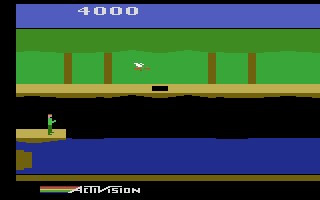
On Romhack Thursdays, we bring you interesting finds from the world of game modifications.
Edit the Frog is back, with a new romhack! And this one’s really amazing.
We’ve mentioned before Vitor Vilela’s hacks that retro a SA-1 (“Super Accelerator”) into SNES games that suffered from slowdown. So far he’s done it with five games: Super Mario World, Gradius III (which really needed it), Contra III: The Alien Wars and Super R-Type. The fifth is the most amazing so far: Race Drivin’.
When the original Hard Drivin’ came to arcades it was pretty incredible, the first 3D racing game that didn’t use scanline tricks to display its track, that rendered it using an actual polygonal 3D engine. It used special custom hardware to make its track and physics possible. Race Drivin’ was less revolutionary, but only because the ground had been broken for it.
It was exactly the worst kind of game to be ported to the Super Nintendo’s infamously underpowered hardware, a 16-bit variant of the venerable 6502 running at about 3.5 mHz, just a bit over twice the speed of the NES. Even from the start, the SNES used in-card accelerators and co-processors to help complex games run: even though launch title Pilotwings made heavy use of the SNES’s “mode 7” graphics to display the game world, it still needed a DSP chip to help it with calculation.
https://github.com/VitorVilela7/SA1-Root/tree/master/Race-DrivinRace Drivin’ doesn’t use any accelerator, despite being one of the games most sorely in need of one. Asking a SNES to perform up to the custom mathbox chips in the arcade game was ludicrous, and so SNES Race Drivin’ is looked down upon by many, and probably unjustly: the coding is perfectly all right, it was just asking too much of the system.
Even with a SA-1 you’d think that Race Drivin’ on SNES couldn’t measure up, but Vitor’s hack does quite a respectable job! The SA-1 is essentially a second of the same kind of chip that runs the SNES, with a number of extra features bundled in. It also has some faster memory included on-die, and runs at triple the frame rate. Imagine if this had come out at the time: the SNES game is less than two years older than the arcade version! An SA-1-powered version that matched the arcade so closely back then would have astounded. I see that in a few places on the Super Stunt Track, it drops to 12 FPS instead of the 30 it holds at elsewhere, but it’s still damn slick.
Here is one of Vitor’s side-by-side comparison videos, demonstrating the old version (on the left) and the upgraded hack (on the right):
SA-1 Root: Race Drivin’ (github)

